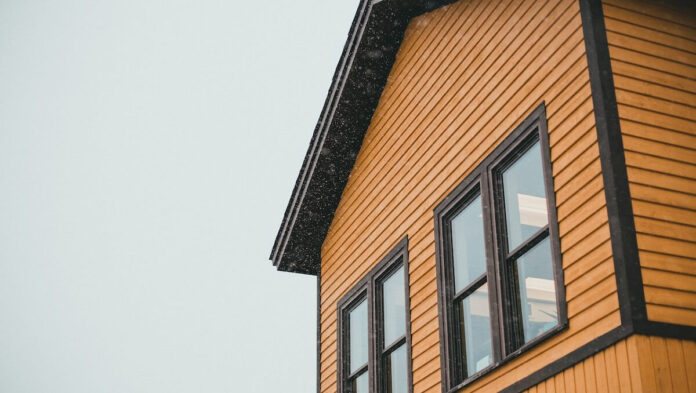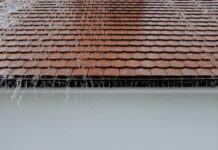Siding, as the name indicates, is the material that covers the exterior walls of your home. From enhancing curb appeal to protecting the house against natural elements and pests, sidings have a considerable role to play in the way your property looks and functions. And since it is directly exposed to the elements, sidings are more likely to get damaged over time.
Different materials can be used as siding on the home’s exterior walls. The durability of each type can vary, but as time passes, each of them can start to fall apart, develop cracks or fade. At some point, you will need to take action by replacing the entire siding, but how does one know when it is that time?
Well, here are all the signs that you can look for which indicate that the siding needs replacement:
1. Excessive cracking or warping
Depending on the weather in your area, different siding materials can show different signs of wear and tear. The most common is cracks and warps. Occasionally, take a walk around the house to inspect the condition of the siding material. If you witness excessive cracks or the material buckling and falling off, it may be time to call in siding replacement experts and get it fixed.
Even in cases where the warps or cracks are not too big, use a screwdriver or any other sharp, pointed object to poke and check underneath them. You are looking for any signs of rotting, moss, or mold, all of which can mean trouble. It is important not to ignore the rot thinking that it is only minimal because even that little amount can become a huge issue within no time.
2. Some materials can develop bubbles and blisters
Notice if you see blisters or bubbles developing beneath your home’s siding. Both of these are warning signs which show that the siding material has absorbed water. These problems are especially common in places with a hot and humid climate or one where there is a lot of rainfall. Most siding materials can hold off moisture for a long time, but once they become old enough, they tend to fail.
Since bubbles and blisters in your siding suggest that you have a moisture issue, you will also need to solve the underlying problem by exploring some of the sealant options that are available. The moisture is a clear sign that your siding is no longer doing its job because siding is meant to keep moisture out of your home. This means it is definitely time to replace the siding.
3. Look for signs of moss and fungus
Other problems that come with moisture are fungus, mold, moss, and mildew. Be careful about this sign because these problems take a long time to develop and then grow to a level where they become a problem big enough to result in costly repairs. Ensure you continue to inspect the siding over time and check for water seepage regularly so that any problem can be nipped in the bud.
Fungus and mold begin to show at the seams because that is where they have the ideal conditions to grow, but eventually, they can creep behind the siding, ripping it off the walls. Not all cases where you see fungus growing can mean there is a bigger problem, like a water leak in the walls, but it is still imperative to have a professional inspect the area to mitigate any potential long-term damage.
4. Siding that has faded considerably
Materials like vinyl, wood, and other synthetic sidings can begin to lose color and fade after continued exposure to sunlight and rain. Most sidings are accompanied by weatherproofing, but obviously, this coating can lose its efficiency over time. And yes, fading may mean you need to replace the weatherproofing, but it can also indicate more.
Even when fading starts to occur, that doesn’t mean the siding itself has become useless. You will need a professional opinion to make an appropriate decision here, but more often than not, this is a sign that you need to consider upgrading the materials covering your exterior walls. You can also think of it as a chance to improve the curb appeal of your property with a more modern-looking material.
5. If you are painting the siding a little too often, it can indicate an issue
Even on the exterior walls, an average home doesn’t require a fresh coat of paint for at least a decade. Regardless of extreme weather in your area, paint on the outer walls can last eight to twelve years. Therefore, if the walls or siding of your home starts to demand new paint more often, for example, every three or six years, you can tell there may be a problem.
One of the more common signs is when paint starts to chip and peel after a short time. This duration can sometimes even be as low as two years, but it is definitely much lower than the ten years for which paint should last. As a result, you can be sure that the problem is with your siding and not the paint. It also means that the time has come to replace the siding.
6. Sudden spike in energy consumption of the house
Your energy expenditures may increase for a variety of reasons. Once you’ve ruled out attic leaks, draughty windows, and inadequate insulation, you should evaluate whether damaged siding might be to blame.
Read Also: 5 Pro Tips For a Successful Bathroom Makeover
Siding helps the house with warmth and coolness, protecting it against outside forces all year. Your energy cost will be affected because old or damaged siding doesn’t insulate well. Once again, the problem may not be excessive and certainly won’t require the replacement of the entire siding in some circumstances. However, if the damage is substantial, you will need to consider the possibility. Ensure you get an expert to evaluate the integrity of the siding and the walls underneath them.
Conclusion
Most siding materials can last a long time. While the exact duration for each material can vary, typically, it stands between five and eight years. However, the forces of nature and other external elements can act more strongly in some cases, resulting in issues arising. Regularly inspect your house siding to check for different signs of wear and tear. Call in an expert before any indications grow into a massive problem.







































